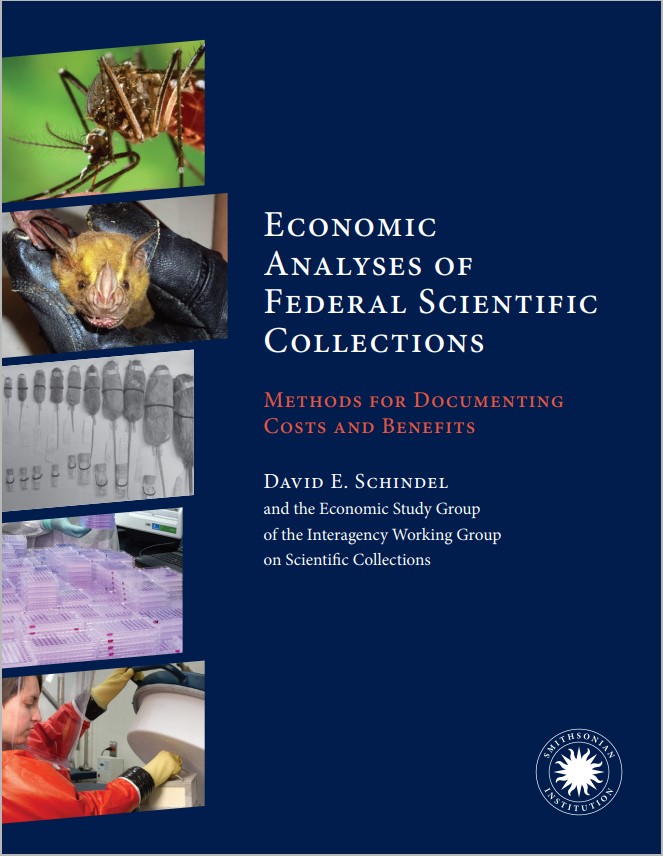The Economic Study Group of the U.S. Interagency Working Group on Scientific Collections (IWGSC) examined the economics of Federal scientific collections. Their report provides a framework for economic analyses, including methods for documenting their long-term operating costs and the benefits they generate.
Background and Goals. The U.S. Federal government conducts and/or supports research in a broad range of scientific disciplines. This research commonly relies on physical objects that range from microbes to moon rocks, from fossils dating back billions of years to emergency medical samples taken from human populations during pandemics. Federal departments and agencies have made – and continue to make –strategic decisions to retain and preserve these objects based on their potential value for future use. Billions of objects housed in thousands of these collections are assets available to the Federal, non-Federal, and international research and development communities.
Congress and the Office of Science and Technology Policy have called on departments and agencies to develop standard methodologies to document the costs and estimate the support these collections will need. At the same time, knowing the benefits generated by these collections is essential to evidence-based management and policy formulation.
The Report. In 2018, IWGSC established an Economic Study Group to develop methods for estimating the costs and benefits associated with U.S. Federal scientific collections. The resulting advisory report to the IWGSC, Economic Analyses of Federal Scientific Collections, presents a standard framework for estimating long-term operating costs, and describes five different methods for estimating and documenting the benefits generated by collections. The methods presented in this report are accompanied by examples of their application by U.S. Federal departments and agencies, highlighting how the differences among collections and their missions require different methods. The report analyzes the strengths and weaknesses of each method and provides guidance to agencies and collections on how to select the most appropriate methods.
Non-federal and non-U.S. collections may find this approach and the different methods valuable for evidence-based budgeting, management, and policy development.
The report was published by the Smithsonian Institution Scholarly Press as an Open Access Technical Report.
Additional Resources. The following materials provide a more in-depth introduction to the report. We encourage you to download, share, and discuss this material as you consider the report and its recommendations.
- A short video introduction to the report (mp4, 3 minutes): This introduction provides an overview of the scope, goals, and results of the study that led to this report.
- A slide presentation (pdf, 21 pages): This presentation was designed as the standard for disseminating the results of the study and for stimulating discussion about implementing its recommendations.
- IWGSC Press Release: The IWGSC co-chairs from the Smithsonian Institution and USDA have issued this press release concerning the advisory report.
Suggested Citation. Schindel, D. E. and the Economic Study Group of the Interagency Working Group on Scientific Collections. 2020. “Economic Analyses of Federal Scientific Collections: Methods for Documenting Costs and Benefits.” Report. Washington, DC: Smithsonian Scholarly Press. https://doi.org/10.5479/si.13241612

